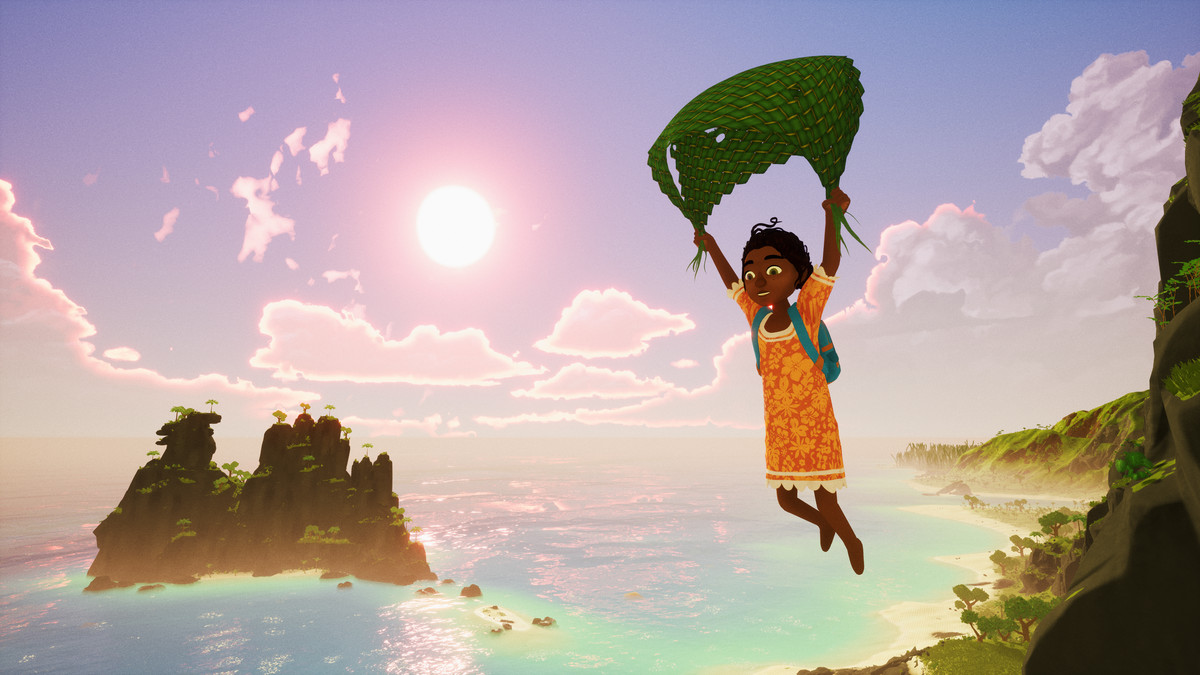You might look at Tchia and recall Link’s glider in The Legend of Zelda: Breath of the Wild. You might also be reminded of the open water sailing from The Wind Waker. But developer Awaceb co-founder Phil Crifo thinks there’s a better comparison: Grand Theft Auto.
“Even though it’s very different in terms of tone and theme, I think the way [GTA developer Rockstar] is able to build fictional worlds based on real places, and take those real places and make them get the essence of a place built into a video game world, has been a real inspiration for the way we treated our rendition of New Caledonia,” Crifo told Polygon.
In 2023, Polygon is embarking on a Zeldathon. Join us on our journey through The Legend of Zelda series, from the original 1986 game to the release of The Legend of Zelda: Tears of the Kingdom and beyond.
Tchia, the new open-world game about a child exploring the wilderness, is set in a fictional version of New Caledonia, a small island nation in the Southwest Pacific. It’s where Crifo and several other members of the development team grew up; all the voice actors are local to the island, too. Rockstar has long created fictional stand-ins for actual places, like Liberty City (New York), San Andreas (California), Vice City (Miami), or Los Santos (Los Angeles). For the developers at Awaceb, making an open-world playground meant drawing inspiration from Rockstar’s ability to transmute real geography into fun.
“When you grew up playing GTA with your friends, everyone had that moment when you’re like, ‘Can you imagine if GTA was taking place in our hometown?’” Crifo said. “We did a little bit of that with Tchia.”
Instead of drug dealers and guns, however, Tchia is about the titular child and her ability to transform into anything in her environment — rocks, a camera, a bird, or a piece of flaming coal. Sort of like if Grand Theft Auto 5’s Trevor Philips could turn into a baseball bat or a stained T-shirt.
Crifo said creating New Caledonia in Tchia was less about nailing the geography, and more about invoking the spirit of the archipelago. “What’s the vibe? What’s it like living there? What are people like? What are the nitty gritty details that give it a smell, a taste. It’s very tricky to do,” Crifo said. Tchia is filtered through the lens of a fantasy childhood in New Caledonia, dripping with the islands’ culture and influences. It’s adventure and exploration and nostalgia wrapped up in a singular culture.

Image: Awaceb/Kepler Interactive
It’s that childhood sense of wonder, then, that evokes the Legend of Zelda comparison. Even though Crifo said he’s not a Legend of Zelda superfan, Breath of the Wild sparked ideas for Tchia’s development, like its choreographed landmarks or its glider, which allows Tchia to float over huge swaths of land. Awaceb is a team of 12, so achieving the scale or grandeur of Breath of the Wild wasn’t an option. But it still manages to evoke a strong sense of place, nonetheless.
Tchia’s defining characteristic is its tactile nature, Crifo said. You can have Tchia touch things, pick them up, throw them. But you can also become them, and feel the weight of an object’s movement. This shape-shifting complements the music and instruments in Tchia, which use actual chords in rhythm minigames. Awaceb wanted players to be able to feel the essence of the place; Crifo pointed to climbing coconut trees. There’s a weight to Tchia as the branches sway and dip the higher she gets. You can feel the snap and fling when she uses the tree as a catapult to get around the world. (Coconut tree climbing, Crifo said, is a big thing in New Caledonia; everyone’s got their own technique.)
“Miyamoto always said that Zelda stems from his childhood, exploring caves and roaming around the wilderness,” Crifo said. “Tchia was built with the very same inspiration behind it. We have similar roots in that sense, which grew into very similar plants.”
